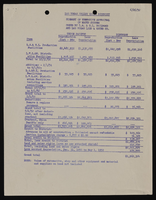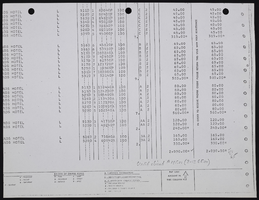Search the Special Collections and Archives Portal
Search Results
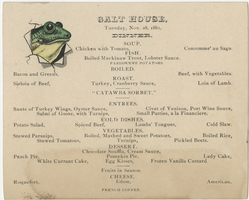
Galt House, menu, Tuesday, November 28, 1882
Date
Archival Collection
Description
Text
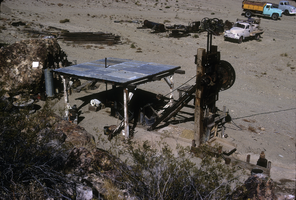
Slide of the old stamp mill, circa 1950s
Date
Archival Collection
Description
Image

Slide of the Bowers Mansion, Washoe Valley, Nevada, circa 1970s
Date
Archival Collection
Description
Image
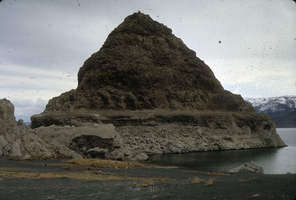
Slide of a tufa deposit in Pyramid Lake, Nevada, circa 1970s
Date
Archival Collection
Description
Image
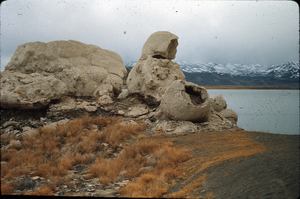
Slide of the rock formation known as The Squaw and Her Basket, Pyramid Lake, Nevada, circa 1970s
Date
Archival Collection
Description
Image
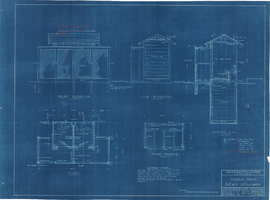
Los Angeles & Salt Lake Railroad Company double privy: architectural drawing
Date
Archival Collection
Description
From Union Pacific Railroad Collection (MS-00397). The scales are noted in the drawing. The bottom of the drawing says, "Material-Finish: All Finish Lumber Unless Otherwise Noted Shall Be [Opsas?] Wood Work Of Vault Shall Be O.P Rough. Exterior Of Privy Including Both Sides Of Door And Door Jamb: Also Wood Lattice Screen On All Sides Shall Be Painted With 3 Coats C.S. Lead & Oil Paint As Directed. Doors Shall Be Hung On 3 1/2" x 3 1/2" Botts. Doors Shall Be Provided With Rim Latch Knob Lock And Iron Barrel Bolt. Revisions: Added Vent Stacks, Seat Cover, Double Floor & Floor Shoe".
The bottom corner of the drawing states, "Union Pacific System L.A. & S.L.R.R. Double Privy 5'x8' With Lattice Screen. Ass't Chief Engineer's Office. Los Angeles, Calif. Drawn By E.C.B. Traced By E.C.B. Checked By F.W.G. Date June 14, 1926. Scale As Noted. Revised May 5. 1927. Drawing No. 15637".
Also written on the drawing: "Two to be built at East Yard, Calif. One ' ' Big Springs, Nev. ' ' Las Vegas, Nev. ' ' Borden, Utah. ' ' Elgin, Nev. 1927. ' ' Dry Lake, Nev. 1927. ' ' Wann ' ' 1928 [crossed out]."
Image

Lucky Cuss Neon Survey document, September 14, 2017
Date
Archival Collection
Description
Site address: 3305 Fremont St
Sign owner: D B N G LLC
Sign details: This property was originally the Panorama Motel, which opened in the 1950's. However, the signage later changed to fit the Lucky Cuss Motel. It was removed from the property in 2008. In 2012, the old sign was restored by the Neon Museum and placed on Las Vegas Boulevard. The replacement sign is still at the property.
Sign condition: 5 - appears to be well maintained
Sign form: Roadside pole
Sign-specific description: The sign at the property is a rectangular cabinet, with the edges at the top rounded off. The background of the cabinet is red, and the outline is blue. The words "Lucky Cuss" are white in a stylized front, and the word "Motel" in larger, block white lettering. On the side of the cabinet is the address 3305.
Sign - type of display: Neon
Sign - media: Steel
Sign environment: Property is on Fremont St, near a car dealership and other motels
Sign - date of installation: c. 2008
Sign - thematic influences: The sign does keep some of the original elements of the first sign, the 1950s era stylized font and simple outlines of neon.
Sign - artistic significance: The sign, although new, does throwback to the original's 1950s creation date.
Survey - research locations: Assessor's website, roadarch.com
Surveyor: Lauren Vaccaro
Survey - date completed: 2017-09-14
Sign keywords: Neon; Steel; Pole sign; Roadside
Text
Billy Root oral history interview
Identifier
Abstract
Oral history interview with Billy Root conducted by Lisa Gioia-Acres on May 14, 2008 for the All That Jazz Oral History Project. Root begins by discussing his upbringing in Philadelphia, Pennsylvania where he developed an early interest in being a musician due to encouragement from his father, who was also a musician. He describes playing baritone saxophone in the Philadelphia Orchestra, performing at the Apollo Theater in Ella Fitzgerald's orchestra, and going on tour with a predominantly African American jazz band in the Southern United States during segregation. Root details his interactions and impressions of various celebrities, such as Frank Sinatra and Tony Bennett, attending Playboy parties, and eventually deciding to settle in Las Vegas, Nevada. He discusses working as a professional musician in Las Vegas, where he performed in such casinos as the Dunes and the Desert Inn. He concludes by discussing his retirement and his family.
Archival Collection

